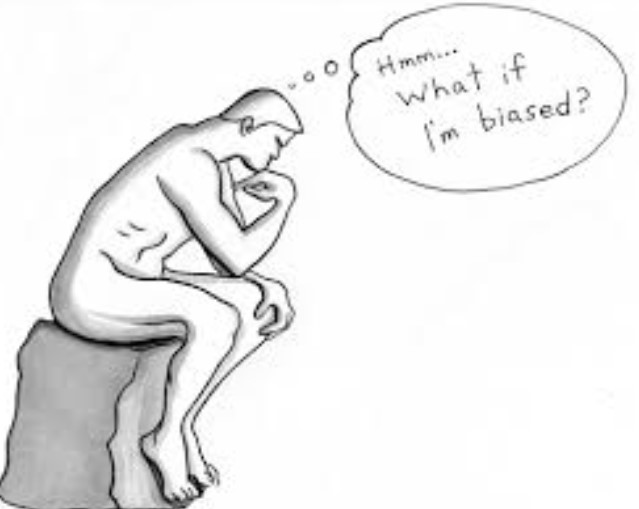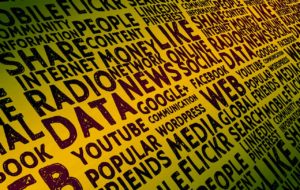How to win sales and influence people
If I remember it correctly, it was Franklin D. Roosevelt who said: “The only thing we have to fear is fear itself.”
Perhaps if that historic speech were given in today’s fast-paced, globally connected, digital world it could be rephrased to, “The only thing we have to fear… is missing out.”
And consider this… according to the psychological phenomenon known as negativity bias, humans pay more attention to, and give more weight to, negative rather than positive kinds of information.
Indeed, when put in an environment with a variety of information to pay attention to, people will immediately notice the threats instead of the opportunities.
Considering our evolution I guess that stands to reason.
Psychological research has attempted to prove the hypothesis that “bad is stronger than good” when it comes to what truly motivates our actions. This theory asserts that things like losing money and being abandoned by friends have a greater impact than positive occurrences like winning money and gaining friends.
So fear can be seen as a powerful primal motivator.
What other biases are hardwired into your customers’ brains? Which ones can be exploited to encourage them to take the actions you desire?
…And which cognitive biases have you been tricked by today already? Including those in the introduction to this blog post!
In this article, you will learn…
- One of the oldest confidence tricks – that still works today
- Why shops and supermarkets stock products they know people will never buy
- Why displaying your clients’ logos shows more than just your brand’s authority
- How even animals can be fooled by simple cognitive biases
- How being influenced by salesmen is the least of your worries…
- And, wait for it… why you have been eating cake wrong all your life!
I think therefore I am – I think
Most people think that they are very rational when it comes to making decisions on what to buy.

However, this could not be further from the truth. As human beings, we have various imperfections, and a major one comes in the form of our brains.
The human brain is a very complicated place. While we are drawn to seek information in order to make informed decisions, more often than not our brains stray from the expected logical decision-making process while attempting to simplify the available information.
This straying from normal decision-making is referred to as a cognitive bias.
Cognitive biases can be used as powerful sales and marketing weapons, especially in the online world, where there is lots of information available – and hence an unlimited number of ways to influence customers.
If you own or manage the website of an online business, you likely won’t want to miss out on the below top five cognitive biases that you can take advantage of to increase your sales and grow your brand.
But first, a fun story…
Heard about the hearing-impaired salesman’s trick? It’s a beauty, even though it lands firmly on the wrong side of the scale. The story goes like this…
Back in the 1930s, two old brothers, Bob and Jim, run a tailor’s shop in New York City. One works on the sales floor while the other works out the back in the stockroom.
A potential customer who had been eyeing up the quality of the clothing asks old Bob the price of a suit he is attracted to. Old Bob is unsure of the price, so he calls out to his brother in the back room: “How much is the full-length double-breasted tweed suit Jim?”
 “900 dollars,” came Jim’s reply.
“900 dollars,” came Jim’s reply.
“It’s 500 dollars sir,” says old Bob.
Frantic to take advantage of the old boy’s mistake, the customer pulls out his wallet and buys the suit on the spot, before making haste to the door with his new bargain suit.
“One born every minute,” Jim chuckles as he hears the door close.
Ok, so as I mentioned, it might be morally objectionable, but you can bet your last dollar that this trick still works a treat for shopkeepers around the world.
And that is just the start…
1 – Anchoring
Unlike the above story, anchoring is a simple cognitive bias rather than a confidence trick. It encourages the mind to latch on to key numbers or concepts and then uses them as jumping-off points for future valuations, calculations, assumptions and decisions.
For example, when exposed to 3 bottles of wine for sale at a convenience store, say 15, 25 and 35 dollars, most people would choose the one mid-priced 25 dollar option.
Hardly anybody is keen to pay for the most expensive option and few people choose the cheapest.
However, by offering a fourth option with a super-high price, say 60 bucks, a number of buyers will instead opt for the 35 dollar (now also mid-priced) bottle that used to be the most expensive.
Now, that is an easy way to get more money out of your market.
You can see why supermarket shelves, car salesrooms, and even website pricing tables often include a very expensive option. Its only job is to anchor buyers at a higher price. A price that they think they are happy with and chose without being unduly influenced.
Anchoring is similar to the decoy effect. Simply put your prices up, then discount them when securing a sale – of course, allowing the customer to think it was their clever negotiation skills that wrangled a better deal.

2 – Belief bias
Customers are less likely to buy from you if you make claims that are considered “too good to be true”, even if they are true. This is belief bias at work.
At Albion, we need to be careful of this one, as many of our case studies illustrate where we have generated 5 times more traffic for clients – we often even have to tone down some of these just to make them sound believable.
Who would have expected a marketing agency to add a negative spin to their figures?
For most businesses, the best way to go about using the belief bias is to inform the customer how your business or product will benefit them, instead of making extraordinary claims about how awesome they are.
Belief bias is strongly related to confirmation bias. Examples of the latter are not hard to find. If you give your customers information they already suspect to be true you’ll win their loyalty more easily.

Confirmation bias is widespread. And you can tell because of how easy it is to predict which newspaper is read by adherents of various political ideologies.
3 – The bandwagon effect
The bandwagon effect is something we see every day—it’s the tendency for people to fall in line with an idea, an action, or a belief just because there are so many other people already buying into it.
It stands to reason why website and marketing campaigns display social proof in the form of testimonials and client logos. Indeed, if a company similar to yours, or in your niche, recommends a certain service or product, you are much more likely to give that endorsement more weight.
It’s an effect that encourages popularity by virtue of already-existing popularity. Marketers take advantage of this by showing off more powerful demonstrations of social proof, such as illustrating your company’s growth trajectory or showing how many customers, readers or social network followers you have built up.
Personally, we often think something shady is going on when visiting a site if we can’t see evidence of social proof. It could be that we are their customer and that they are going to use us as as guinea pig. That likely isn’t the case, but it can cross people’s minds, even if unconsciously.
4 – Single option aversion
When you give your customers one option, they are less likely to buy your product – instead, they will start looking for other alternatives.
This bias is referred to as single option aversion, where customers are unwilling to choose an option (regardless of how attractive it is) when there are no other competing options. You can take advantage of this when promoting your business by giving your target audience a number of options.
However, you should be very careful with this cognitive bias, as giving too many options will also have the same effect as a single option – the target audience will have a hard time choosing, and most likely end up choosing nothing at all.
Therefore, the best way to benefit from the single option aversion bias is to offer your customers three or so options, so that they have alternatives, but not so many they risk becoming confused.
5 – Loss aversion
Loss aversion is a very common cognitive bias which you should be aware of when promoting your business and its products and services. I used it in the intro of this article to pull you in and encourage you to read on.
Did you know that taking $50 away from a person will prompt greater excitement than giving them $50? This bias and its corollary – the status quo bias and endowment effect – cause us to prefer things we already own. You know, a bird in the hand and all that…
Also referred to as the ‘Fear of Missing Out‘, this cognitive bias is based on the fact that the fear of losing something is far more powerful than the satisfaction of gaining something.
Therefore, when promoting your products and services, you can take advantage of FOMO by making the potential customers feel they will be losing out on something if they do not take the intended action. That’s why many sales “end soon” despite a new sale being just round the corner.
Giving people the impression that your customers have done all the hard work already and they just need to top it off with a few extras which you can provide, also works a treat.
Making people think they will miss out to their competitors not only encourages them to read your web pages but, if product descriptions are cleverly worded, can also help to increase your sales figures.
6 – Zero-risk bias
Zero-risk bias is our tendency to strongly favour offers that seem to have no risks or consequences associated with them – in fact, it could be seen as an extension of our loss aversion bias.

In any case, this bias is responsible for why money-back guarantees and risk-free trial offers are so appealing to consumers.
I mean, who in their right mind would refuse guaranteed Google rankings increases (or you don’t pay a penny) and more profits from great results your competitors are already enjoying, right now?
7 – Attention bias
Attentional bias is based on the fact that people are more likely to buy a product they are familiar with (or from a familiar brand) as opposed to one they have never heard of.
Of course, this stands to reason because you already know the risks and benefits of products and services supplied by brands you already use and trust. Despite this, we are often unaware how we are being unduly influenced to sticking with a brand, once they have won us over.
One of mankind’s biggest follies may be our loyalty. Or maybe being sticking with those we trust is yet another evolutionary benefit that has shaped our minds and set us on our path to form tribes of all types.
8 – Mere exposure effect
Strongly related to attention bias, the mere exposure effect describes people’s tendency to like a product they are repeatedly exposed to, no matter what the product is. This is caused by people getting familiar with the product, which facilitates them liking it.
You can use this cognitive bias in your favor by repeatedly exposing your target audience to your brand and its products. Once the potential customers are familiar with your brand, they will then be more likely to buy from you, which will guarantee you more sales.
Better still, attention bias can help bring in new customers. It is known that people are more likely to buy from brands they are exposed to more than 7 times. So by using methods such as Adwords image advertising, you can get your brand and products in front of potential new markets time and time again (and only ever pay for it when people click your ad).
9 – Placebo effect
Simply believing something will have a certain impact on you sometimes causes it to have that effect. In medicine, it is the beneficial effect that arises from a patient’s expectations from a treatment, rather than from the treatment itself.

This beauty just goes to show how fallible our decision-making process is – but don’t worry, we are not only fooling ourselves – it works on animals too!!!
One way brands use the placebo effect is to enhance marketing effectiveness through premium pricing. Simply put: people’s experience of a product can be enhanced if expectations are higher – so the higher the price of something is, the better we think it works. Go figure!
10 – Framing effect
This effect describes people’s tendency to be influenced in their decisions by the way a proposition is framed. An example of this is the famous “Because you’re worth it” campaign by L’Oréal which suggests that you aren’t worth it if you don’t buy their product.
Information can be presented in different ways. The classic example is the glass being half-full versus half-empty. When you use positive language and design you frame arguments or decisions in a way that makes people more likely to act…
Remember, one man’s terrorist is another man’s freedom-fighter, and that many hands make light work despite too many cooks spoiling the broth.
The point is, there are many different ways to look at things and training your brain to be receptive to change is a good thing. It’s just that good old rationality and logic aren’t always enough to force that change.
For example, as I mentioned near the start of this post, you have been eating cake incorrectly all of your life!
You should eat cake, toast, and well, everything, upside down. Why? You have thousands more taste receptors in your tongue than in the roof of the mouth.
Knowing that, will you change your ways? Prolly not.
Summing it up
There are many habits, social norms and cognitive biases influencing your decision-making processes as you go about your day. And they don’t stop working just because you are aware of them.
Over the years experienced marketers and salesmen have fine-tuned many techniques ways that ensure they tip the balance in their favour.
You can do that too…
While all of your competitors are stuck appealing to logic and reason, you can start experimenting with the many other forms of persuasion. Remember:
- Anchoring can influence customers to choose higher priced products
- Belief and confirmation bias influence people to go with what they already (think they) know
- The bandwagon effect has us follow the crowd because it seems to be working well for them
- Loss aversion causes people to cling to what they have, and invest more just to keep it
- And of course, there are the simple con tricks spewed by liars and tyrants throughout the ages
Go figure!



